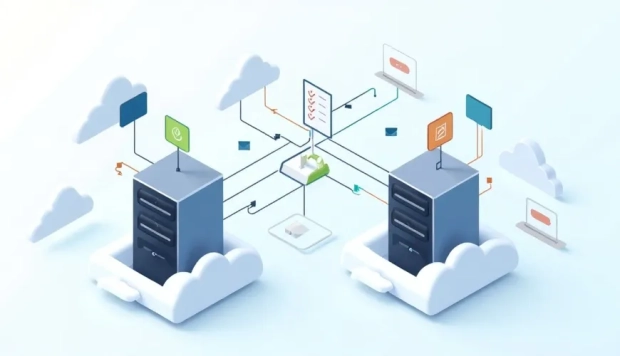Expert Insights on Cloud Storage Optimization and File Hygiene

Back in the day, when cloud storage was introduced to the world, it didn’t instantly grab people’s attention, which meant that not everyone had it. But over time, people have realized how beneficial it is, which is why one of the main reasons why the vast majority of them use it.
If you are new to this, then you must bear in mind that you cannot simply dump your files in it. On the contrary, you must be very careful when it comes to storing and managing your folders and files, because if you aren’t, it’s going to negatively impact their performance, safety, and many other things.
But don’t worry! There are a number of things that you can do to stay properly organized, as far as this goes, and below, the most effective tips (suggested by cloud storage connoisseurs) are about to be listed!
The Importance Of Cloud Storage Optimization & File Hygiene
There’s no doubt that cloud storage is extremely scalable, but it also lures users to spend more than necessary. How come, you probably wonder? Namely, there are those who will spend a fortune on premium packages for all their files, although it’s highly likely they’ll never employ a lot of them.
This is a pretty common situation with a lot of cloud storage users. Therefore, it’s much better to place infrequently accessed data in more affordable tiers. Besides that, when your cloud storage is chaotic, meaning that it’s full of duplicates, outdated versions, etc., it’s going to undeniably impact its performance.
It’s going to become a lot slower, and you’ll end up being very frustrated. That’s exactly why you need to allow file hygiene and cloud storage optimization to step in and ensure everything functions seamlessly.
Another thing that you should remember is the fact that even the files that you no longer use, or have forgotten about them still “reside” in your cloud with forgotten access controls, old permissions, and/or improper retention policies, which isn’t a good thing.
But that’s why file hygiene is here. It’s going to help you audit, identify, get rid of, or archive older files, and, at the same time, remain compliant.
Make Use Of Technology
To be honest, taking care of your files and folders in cloud storage can often be very time-consuming and tedious, particularly if you have tons of things out there. In these circumstances, it’s much better to make use of something that’s going to alleviate this burden for you.
So what does this refer to? In case you didn’t know, nowadays, you can turn to a bunch of different applications that are intended for storage management. If you’ve never heard of them before, then just go to the filerev.com website to get more information when it comes to this. It’s like having a virtual assistant that’s going to help your cloud storage remain functional by eliminating anything that’s redundant, duplicate, and many other things.
At the end of the day, why would you waste your time organizing and managing all of this when there’s a solution that can streamline and speed up this entire process?
Did You Hear About Spot Instances?
So what can be said about them? They practically represent an additional cloud computing power that providers rent out at a huge discount. They aren’t as pricey as some others because they utilize leftover capacity, which refers to the servers that aren’t employed at the moment.
It’s worth mentioning that these instances can easily be taken back by the provider at any given moment, if by any chance the demand all of a sudden goes up. They are perfectly suitable for jobs that aren’t forced to run all the time, like testing, data analysis, and/or background tasks.
If your setup is flexible, then you can always automate things so your system switches seamlessly when a spot instance goes away. By doing so, you get savings without dealing with any major downtime.
You Should Right-Size Your Services
Another step that’s equally as essential as the ones that were previously mentioned is this one. So, what does this mean exactly? This means that you’ll make sure you are utilizing the most suitable services for particular tasks and that you aren’t oversupplying your resources in any way, because if something like this occurs, it will result in wasted resources and a bunch of different expenses.
In contrast, underprovisioning is also not a good idea, because it can cause poor performance and service disruptions. Consequently, it’s pivotal to right-size your services, meaning comprehending the workloads, along with their needs.
This oftentimes includes executing a detailed audit of your current services or making use of various cloud management tools that are designed to supervise usage and performance.
Time For Lifecycle Management
One of the best things that you can do in these types of situations is to automate “what occurs when files become too old”. That’s an ideal moment for lifecycle policies that are designed to help you get rid of or move data based on access patterns, age, and value.
If you ask Google Cloud, it will tell you that this whole process can be defined as if you’re having your own personal butler that’s here to ensure your attic is in a perfect condition. If you decide to do this, then you will:
- Radically lower your costs because you will move old data to cheaper storage
- You will decrease the risk of dealing with data that you no longer need or that is simply surplus
- Stay organized
What About Reserved Instances?
There was a paragraph dedicated to spot instances, which were briefly explained, but did you hear about the reserved instances? They are also another amazing cloud optimization strategy that can help you skimp on costs.
They represent commitments to utilize particular services for a certain period of time, which is typically one or three years, and in return, the provider is going to “treat” you to fantastic discounts in comparison to the on-demand pricing.
Reserved instances are a great alternative for steady workloads. Even though to some of you this may seem like a huge investment, keep in mind that you’ll actually save over seventy percent, which is something you would never be able to do with on-demand instances.
In a nutshell, this may require a certain amount of money in the beginning, but it’s for sure an investment that will pay off in the long run.
Have You Considered Auto-Scaling Features?
In case you didn’t know, this is a phenomenal feature that a lot of cloud providers offer these days. So, what makes it so omnipotent? Namely, it enables you to automatically scale your resources down or up, depending on demand.
This will make sure you aren’t only employing and giving money solely for the resources that you truly need, but it will also positively affect the performance by ensuring that the workloads are provided with enough resources they need to run seamlessly.
If this sounds like a great idea, and you’re willing to give it a try, then you first must set up scaling policies. They determine how and when your resources will be scaled. For instance, you might decide to set a policy to scale up the resources during peak usage, and then, later on, scale them down during off-peak usage times.
All of this may sound a bit complex and confusing to you right now, but trust us when we say that it’s definitely worth the time and effort.
Optimizing File Transfers And Performance
Storage isn’t solely designed to save data. Although that’s one of its “roles”, don’t forget that it’s also intended to help you safely retrieve and employ your data. If you want to effectively optimize file transfers and performance, then these are the steps that you’re supposed to take:
- Utilize object naming conventions that allocate load
- Co-locate computer resources and storage when latency becomes crucial
- Leverage parallel uploads and downloads or multi-part transfers for files that are bigger
Destruction Of Records Is Sometimes Mandatory
Lots of people and firms have the tendency to archive their files and folders, thinking that it’s a very wise idea, which isn’t exactly true. Ask yourself, why are you doing it in the first place? Archiving isn’t exactly a solution, but rather postponing the inevitable.
You are basically moving your issue to a different place, and that’s all. In the beginning, you may perceive it as an excellent strategy because you’ll save some money, but remember that it certainly isn’t a permanent solution; on the contrary.
When you hold on to data that is no longer beneficial to you, you are actually making things worse. That’s why it’s essential to take the destruction of records into account in these circumstances.
If by any chance the records aren’t destroyed properly, or you notice any spoliation, then your business could potentially deal with some allegations.
Truth be told, all of these aforementioned activities may not sound like the most amusing things in the world; however, they are actually major lifesavers that will boost the performance of your cloud storage and will help you avoid many risks.



